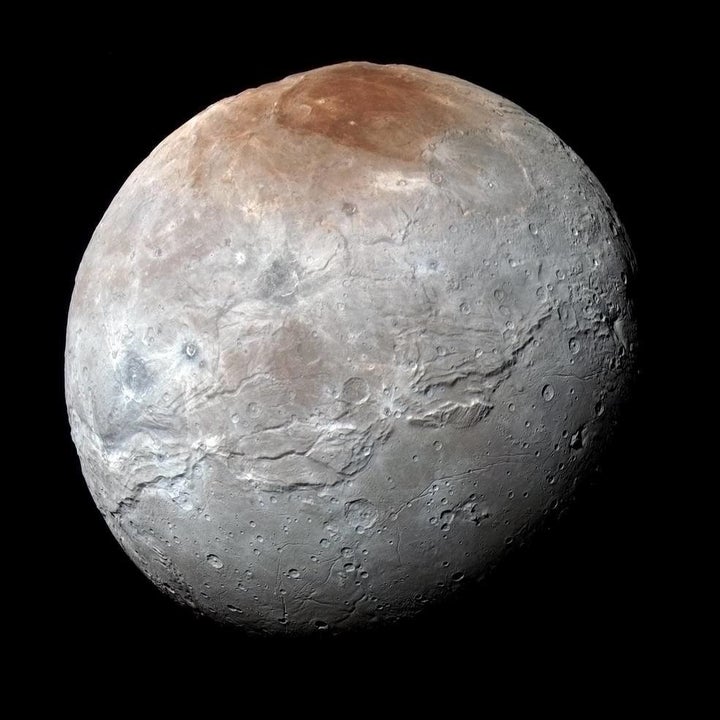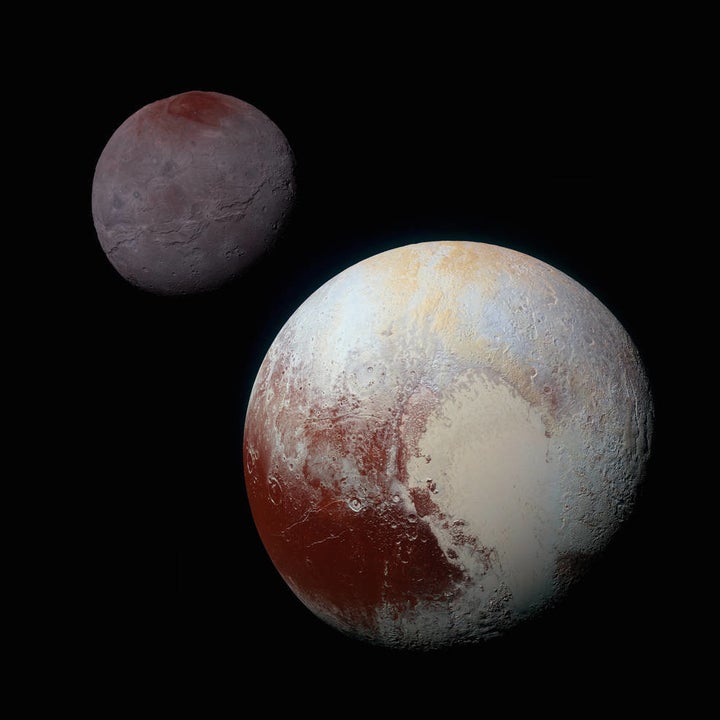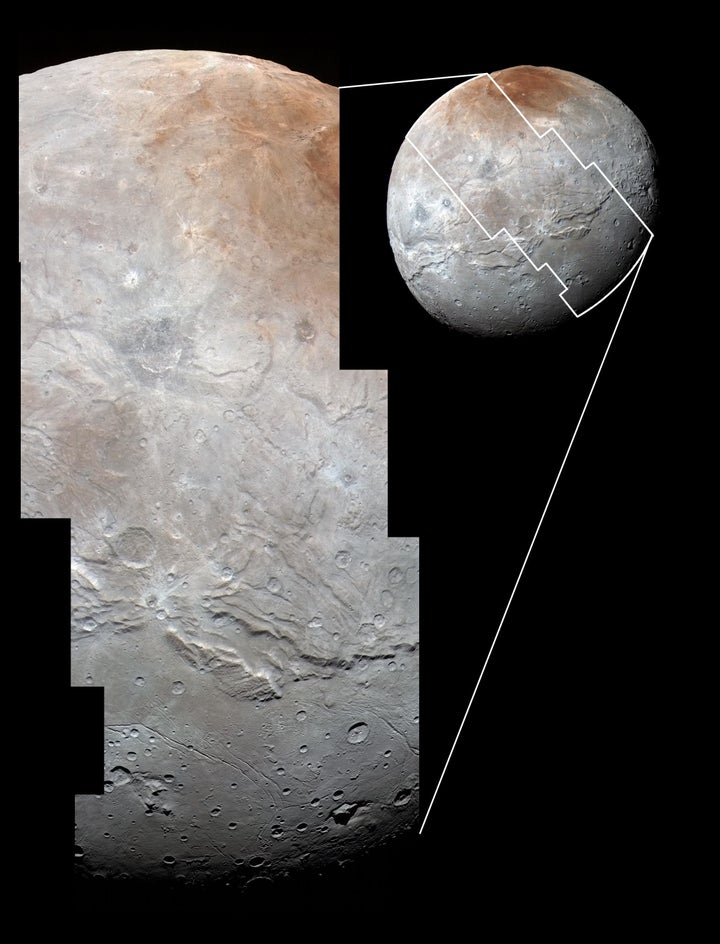NASA has released striking new images of Pluto's largest moon, Charon, and the world they show is very different from what the space agency's scientists had expected.
Many of the scientists had expected Charon to have a monotonous surface covered with craters, the agency said. Instead, the photos--taken by NASA's New Horizons spacecraft on July 14--reveal a landscape dotted with mountains, canyons, and landslides.
The high-resolution photos also show stark variations in Charon's surface color.
“We thought the probability of seeing such interesting features on this satellite of a world at the far edge of our solar system was low, but I couldn't be more delighted with what we see,” Dr. Ross Beyer, an affiliate of the New Horizons team from the SETI Institute and NASA Ames Research Center in Mountain View, California, said in a written statement.



Perhaps the most dramatic feature is a vast system of canyons that stretches more than 1,000 miles across Charon's face and likely onto the moon's far side. (The video above lets you fly through it.)
In case you're wondering, NASA says that's four times longer than the Grand Canyon and in some places twice as deep. As Dr. John Spencer, a New Horizons scientist affiliated with the Southwest Research Institute in Boulder, Colorado, said in the statement, "It looks like the entire crust of Charon has been split open.”
